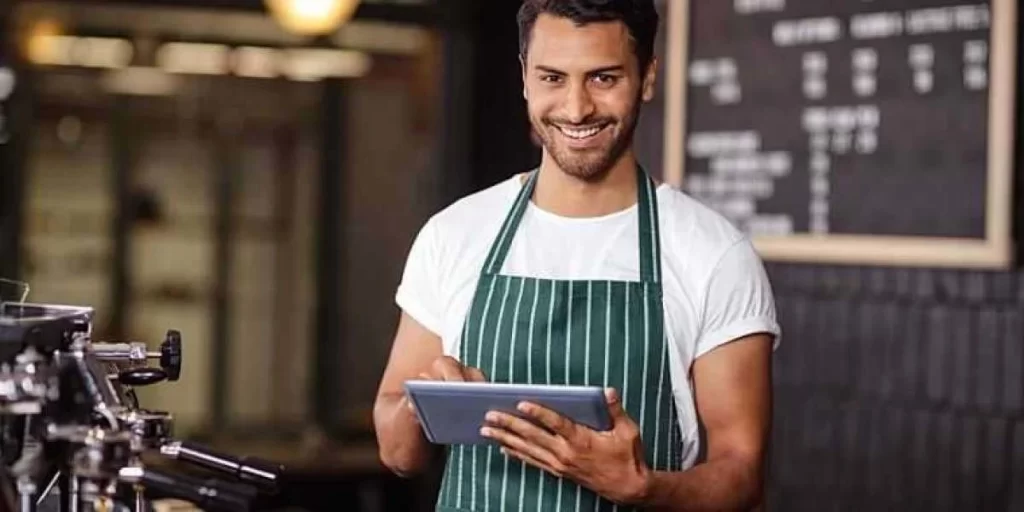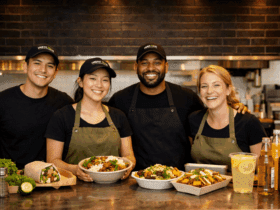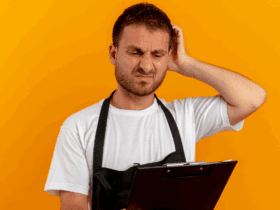Quick-service (QSRs) or high foot traffic restaurants use self-ordering kiosks for added convenience during peak hours or as a contactless alternative to ordering through their servers. Furthermore, high-volume businesses will employ kiosks to help increase volume and to cut down on wait times. But do they increase revenue enough to justify the cost?
Kiosk ordering systems allow restaurant patrons to order food without assistance from an employee. They typically (but not universally) come with the following components:
-
- Display screen
-
- Keypad
-
- Credit card reader
-
- Bill changer
-
- Enclosure for added privacy
Restaurant kiosks must have a positive revenue impact since the number of establishments using them has increased by almost 10 percent year over year. However, the same factors affecting restaurant margins typically affect kiosks, including:
-
- Establishment classification
-
- Customer demographics
-
- Location
-
- Seasonality
-
- Menu options
Here, You’ll Discover How Much Revenue You Can Generate For Your Restaurant From Kiosks, Considering All The Variables.
Next, further reading will show why these numbers are relevant within this growing sector. We’ll also answer those lingering questions concerning the pros and cons of having ordering kiosks installed in your restaurant.
1. Labor-Cost Savings

According to the latest industry statistics, restaurant owners can save up to $6,000 per month on labor per kiosk. However, it’s not just about slashing workers from the payroll. Many owners and managers are now opting to move their front-end staff to the back of the house.
The decrease in servers allows those left to provide excellent customer service. The tasks required that typically can’t be automated include the following:
-
- Delivering orders to tables
-
- Refilling drinks
-
- Handling customer service issues
-
- Assisting with cleaning and food prep
Another key metric to consider is labor cost as a percentage of sales. As you’ll see later in this discussion, kiosks tend to increase the average order size. The result is higher throughput while reducing or leveling out the need for increased labor costs.
2. Revenue Generated By Higher Order Volume
Recent studies show that McDonald’s customers spend 30% more at kiosks than at the counter or drive-thru window. Other restaurants are reporting similar results, including both quick-service and sit-down establishments.
Customers at self-serve kiosks tend to be less embarrassed about ordering more food. Having to tell another person what you want can sometimes feel intimidating, even if those fears are unfounded. Kiosks offer a sense of privacy, so you can feel comfortable ordering what you want and even how much you feel you can handle.
Another benefit for the customer is being able to take their time. Many people feel rushed when they order at a counter and are unwilling to hold up the line behind them. They sense the impatience of the order taker on the other side and decide to quickly ask for the “number 3” instead of adding dessert along with it.
With kiosks, the customer is in total control and can take their time getting what they want without being rushed through the process. They can look at the entire menu, make their final choice, and carefully review their order to ensure they got everything. This sense of being in charge leads to much higher-order tickets and often results in happier customers.
Self-service technologies change people’s thinking toward their ordering experience. For example, studies show that when a customer interacts with a touchscreen device, it triggers feelings of joy, pleasure, and ownership. The fun and novelty of touching the screen have the same effect as playing a video game and often make the customer spend more money.
Finally, self-ordering kiosks allow you to allocate more menu space to higher ticket offerings instead of focusing on cheaper value selections. Most models feature animated cues to draw attention to the menu items you want your customers to select. The result is a 20 to 30 percent increase in sales volume, month over month.

3. Revenue Generated By Upsell/Cross-sell Promotions
Getting your cashiers and servers to upsell and cross-sell is a common problem for most restaurants. You can incentivize these programs all you want, but the fact remains that even the most productive members of your team will forget to mention them. Since kiosks have built-in upsell features, the average order per ticket increases naturally while your blood pressure decreases simultaneously.
Kiosks offer dynamic menu item descriptions along with vibrant images and ingredient lists. These features entice the user to make these choices based on emotion. It also frees up the customer’s time and takes the pressure off them to make a choice quickly.
The great thing about having automated ordering is that it lets you customize your menus based on data compiled in the system. You get a detailed monthly report about what items customers add to their orders and what they are leaving out. This vital information will allow you to shift upsell items to a more prominent position on your menu.
Offering the customers a chance to view menu items privately feels less intrusive to them. They get to see colorful photos of upsell and cross-sell items in a low-pressure environment where they can select what they want with ease. The result can be a 30% percent increase in upsell volume for many restaurants.
4. Revenue Generated By Offering Loyalty Programs
Loyalty programs are even tougher to promote through your human team members. Most servers and cashiers can get overwhelmed during peak hours. When that happens, you can kiss any chance of employees promoting your loyalty programs goodbye.
Not so with kiosks. The software integrates easily with your loyalty rewards program and seamlessly applies all appropriate customer rewards and discounts. It also saves data on each guest, so they can easily customize their orders with every subsequent visit.
5. Average Annual Sales Increases

When McDonald’s began installing order kiosks in their restaurants in 2019, C-level execs expected about a three to five percent increase in overall sales volume. Instead, they were surprised that, at many locations, it jumped to as much as nine percent! Researchers credit the kiosks for allowing the customers to be in charge of their orders, ensuring a higher level of accuracy and cutting down on unnecessary waste.
6. Decrease In Customer Wait Times
Automated ordering means shorter wait times for your customers. They allow your guests to choose their menu items quickly, review their selections, and pay on the spot. When you provide people the freedom of a kiosk, it dramatically reduces the time spent trying to explain what they want to a human server.
Decreased wait times also mean more customers are served. Those pressed during their lunch breaks can finally move to the front of the line and have a fighting chance to finish their meal before they clock in again.
However, it’s not just about customer convenience. Studies show that lower or nonexistent wait times can result in a revenue boost of nearly 15 percent for a restaurant.
The Bottom Line
Restaurant kiosks provide ample ROI with minimal downside risk. The following numbers illustrate this clearly. Listed here are the benefits and the revenue impact created by each:
Kiosk Benefit and Revenue Impact
Labor Cost Savings: Up to $6,000/mo. per unit
Average Order Increase vs. Human Order Taker: 16% to 30%
Increase In Upsells/Cross-sells: 30%
Increase In Loyalty Promotion Selling: 21%
Average Annual Sales Increase: 7% YOY
Revenue Lift from Eliminating Customer Wait Times: 15%
You may be reluctant to jump into kiosks if you already have an exceptional POS system in place. However, given the above stats, it’s clear that your competitors will probably make the move sooner than later.
Restaurant kiosks boost revenue and increase loyalty, especially among younger customers. They work best when placed in areas where long lines hamper throughput and patrons have easy access to them.












Leave a Reply